6 Startups Building Underwater Drones
Table of contents

Remember when that kid fell down the well back in the late 1980s? We were well into the 24-hour news era (CNN went live in 1980) but still far from the days of social media and the interwebs when we can pretty much get on-demand information. Today’s version of the “kid in a well” story is this gripping tale of the Thai soccer team trapped in a flooded cave system. While we’re pounding on the keyboard for this article on underwater drones, rescuers are slowly pulling the kids to safety, while the whole world watches. Even Elon Musk got into the act, sending engineers to the site and proposing to design a kiddie-sized yellow submarine.
While it was a pair of badass British divers who first found the kids, Thai military had been using underwater drones, some equipped with heat detectors, to locate the team. This got us to thinking about underwater drones, or boat drones, and the kinds of startups out there developing this type of technology. We found a few consumer underwater drone companies a couple of years ago. As you might imagine, there are a lot more companies competing in the space now, though many of the startups we found mainly serve oceanographers and other marine researchers, so it can be a bit niche.
Underwater Drones or Remotely Operated Vehicles (ROVs)
Drone Boat for the High Seas
Founded in 2012, Alameda, California-based Saildrone has raised $88.5 million in the last 2 1/2 years, including a $60 million Series B in May that included venture capital firms like Horizons Ventures and Lux Capital. Saildrone designs and manufactures wind- and solar-powered autonomous boat drones called Saildrones for ocean research. Based on a design used to beat the land-sailing record (a 126-mph run across California desert), the Saildrone sports a sporty carbon fiber wing and solar panels.
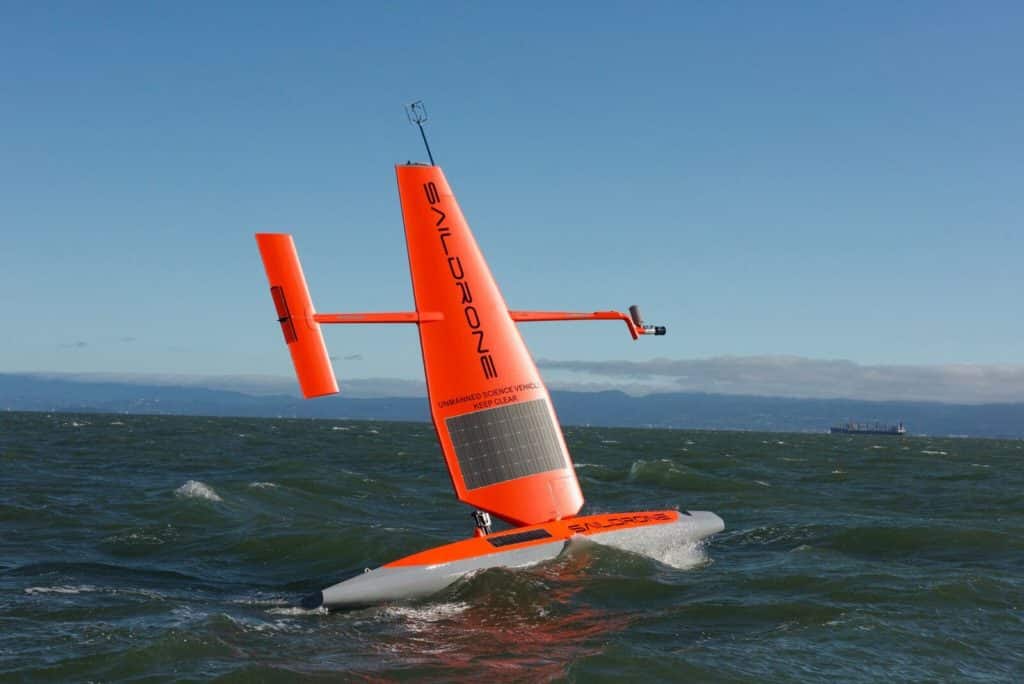
Capable of autonomously sailing the seven seas at a steady 3 to 5 knots per hour for months at a time, the Saildrones are outfitted with all sorts of instruments to collect data on the ocean and atmosphere.
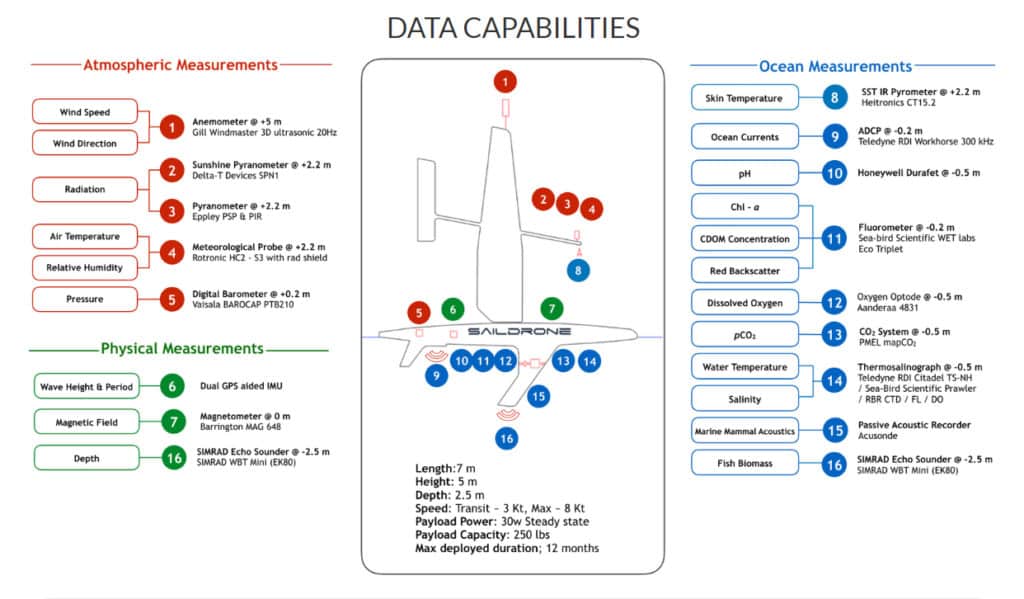
Its science missions range from collecting basic oceanographic data that feeds climate models to assessing fish stocks, as the world’s most advanced fish finder. One of its biggest customers, NOAA, leases each boat drone for $2,500 a day. That might sound like piracy but based on what it costs to run a fully manned ship per day, that’s probably a bargain.
Underwater Drones That Navigate Autonomously

Underwater Drones for Shooting 4K Video

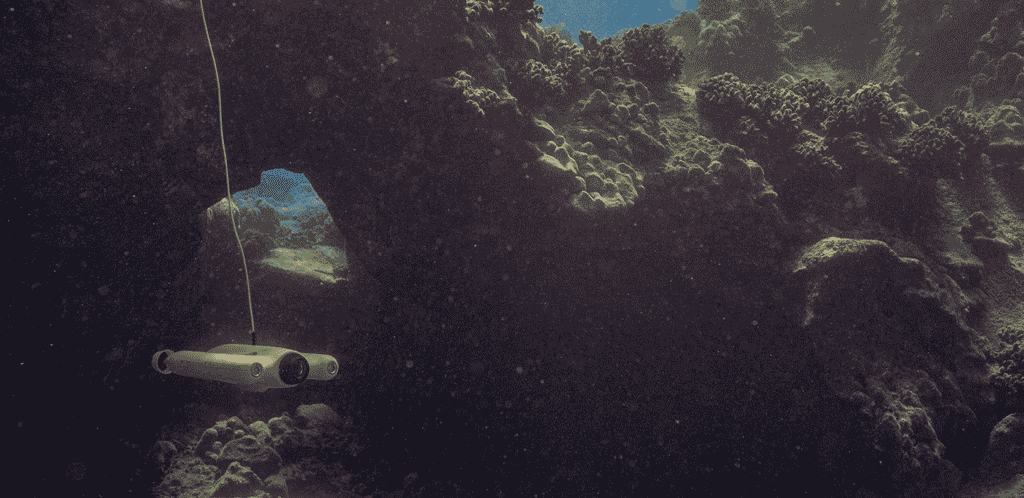
The Standard Pro model retails for $1,499, while the Advanced Pro (with 4K video and more storage) will set you back $1,799.

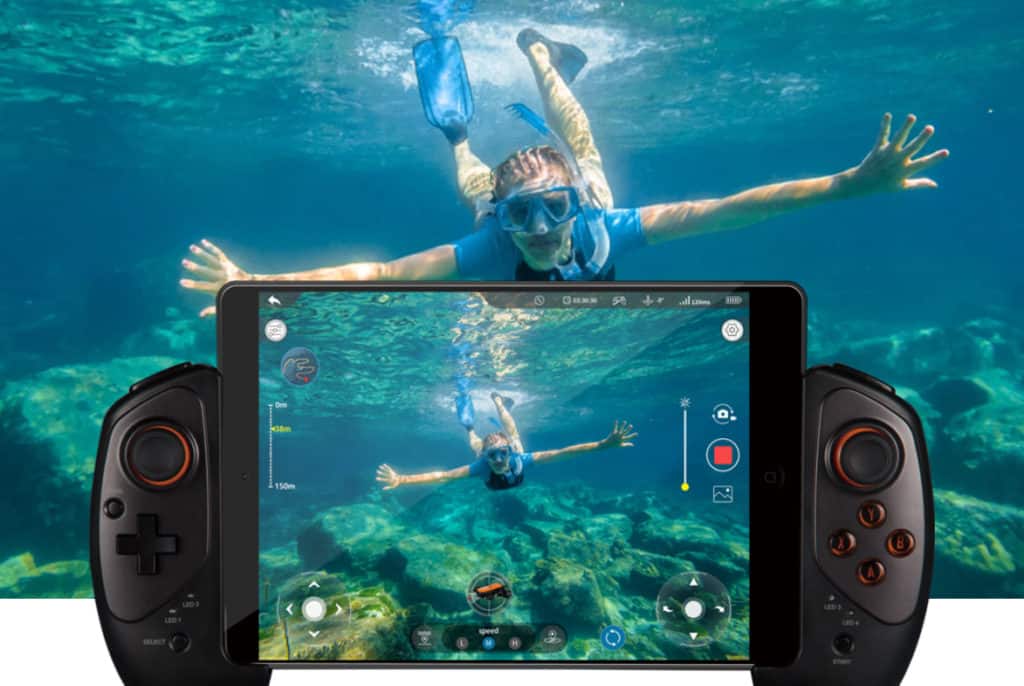
Titan appears only to be available on the company’s Kickstarter page, starting as low as $1,399 (against a suggested retail price of $2,599). Its first underwater drone, Poseidon 1, is available on Amazon for around $1,800.
Underwater Drones for Inspecting Infrastructure
Founded in 2015, Planys Technologies out of Chennai, India, has raised nearly $2.5 million, most of that in a Series A in January of this year, for what we would call industrial underwater drones. The startup is a spinout from the Indian Institute of Technology Madras. Planys develops underwater drones, or ROVs, that help inspect submerged structures such as bridges, dams, and offshore oil rigs.
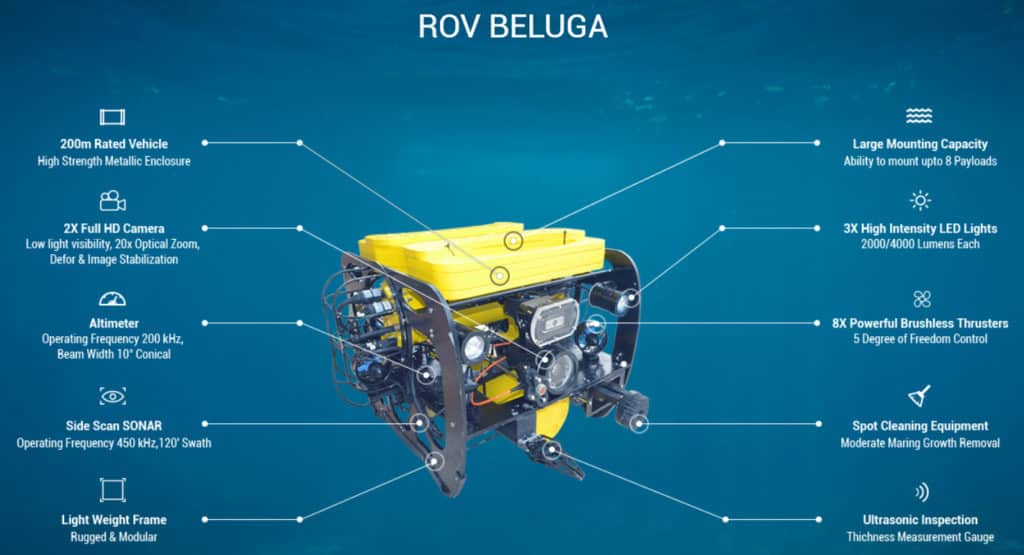
Its newest ROV, Beluga, sports all sorts of fancy instrumentation including an ultrasonic thickness gauge to measure a metal’s thickness and less techy pieces of equipment such as a whirling brush for spot cleaning metal surfaces.
Underwater Drones for Controlling Invasive Species
Florida has a problem, and we’re not talking about all of the amazing options for Early Bird specials. Tropical lionfish are moving into subtropical and temperate climates, devastating native species. A little startup called the American Marine Research Corporation just scored a $50,000 contract with the Florida Fish and Wildlife Conservation Commission to battle the beasties by combining underwater drones with machine vision technology. The basic idea seems to be to build an autonomous platform that can locate and capture lionfish en masse in order to sell them to local restaurants for all those Early Bird specials.
Conclusion
The drone market has really taken off over the last few years. Goldman Sachs sees lots of gold in its future, predicting that the market will hit $100 billion by 2020. Underwater drones will likely account for only a small slice of that pie for the foreseeable future, and there are no dominant players like Shenzhen, China-based DJI Innovations, which remains the biggest aerial drone company in the world. It wouldn’t be much of a surprise if the Chinese eventually come to dominate the underwater drone consumer market as well, cramming more and cooler camera tech into increasingly affordable robots. But there is still opportunity in the civil sector, where governments and companies will turn increasingly to drones above and below the water to help inspect and maintain infrastructure. Finally, there is the angle of pure exploration and science where Saildrone appears to be leading the race. As the great underwater explorer Steve Zissou said, “This is an adventure.”
Sign up to our newsletter to get more of our great research delivered straight to your inbox!
Nanalyze Weekly includes useful insights written by our team of underpaid MBAs, research on new disruptive technology stocks flying under the radar, and summaries of our recent research. Always 100% free.













